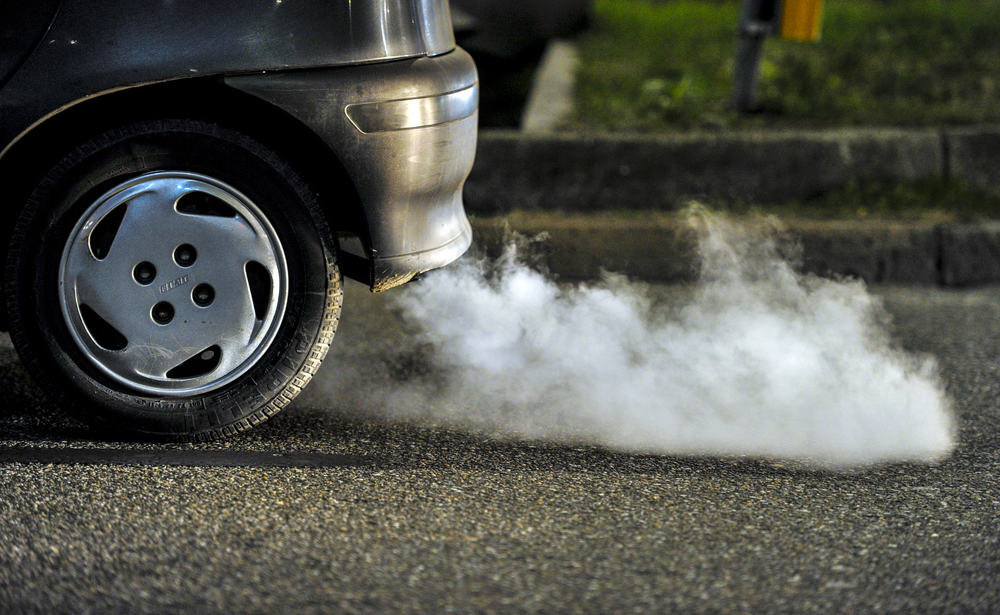Contents:
- Medical Video: What Your Exhaust Smoke Is Trying To Tell You
- The danger of exhaust fumes on human health
- 1. Vehicle exhaust is carcinogenic
- 2. Triggers damage to the respiratory system
- 3. Circulatory system damage
- Not everyone will experience the same effect from exposure to exhaust fumes
Medical Video: What Your Exhaust Smoke Is Trying To Tell You
Exhaust gas (emissions) from vehicles, or better known as exhaust fumes, is a waste product from combustion of imperfect vehicle engines. Discharged gas contains various chemicals and is easily inhaled by anyone around the vehicle that emits. Without realizing it, the exposure enters the respiratory and circulatory systems causing damage to the body even though it takes a long time.
The danger of exhaust fumes on human health
1. Vehicle exhaust is carcinogenic
Even though fuels now have lower pollution levels, the number of pollutants remains high due to an increase in the number of vehicles. In addition, the exhaust gas in the vehicle remains carcinogenic which is harmful to health even in small amounts. Exposure to carcinogenic substances results in organ damage and can cause cancer.
There are two main chemicals from vehicle exhaust gas that are carcinogenic, namely:
Benzene - is an aromatic compound as a basic mixture of fuel, and is released together with exhaust gas from the vehicle. Benzene easily enters the body through the respiratory tract and skin surface. Too much benzene in the bloodstream can cause interference with the formation of red blood cells by damaging the bone marrow.
Lead - is a metal that is easily formed so that it can be produced from vehicle exhaust gas. Lead metal can settle and accumulate on various surfaces of objects, even within the bodies of living things, plants, and water. Lead exposure to a person causes a reaction in the bloodstream, increasing the risk of anemia and disrupting the nerves and brain.
2. Triggers damage to the respiratory system
The respiratory system is the first part and the most important is the impact of exhaust gas exposure. The impact of exposure to vehicle exhaust gas on the respiratory system, including:
Reducing oxygen levels in the body. All inhaled air will enter the lung cavity to be distributed throughout the body through the bloodstream. Inhaling vehicle exhaust gas will be very dangerous because it contains carbon monoxide (CO). Compared with oxygen, CO is more easily bound by red blood cells so that exposure to CO in a short time can reduce oxygen levels distributed in the blood. Tissues of the body that is experiencing lack of oxygen will be very easily damaged, especially the brain, and CO levels also trigger the occurrence of shortness of breath.
Respiratory tract damage. Vehicle dust particles are usually in the form of black dust released from the exhaust channel. The dust can also settle in other parts of the vehicle. Long-term exposure to vehicle dust can cause disorders including:
- Asthma - Not only is asthma triggered by allergies but also inflammation that causes impaired lung function in breathing.
- Lung cancer - irritation and inflammation and the accumulation of carcinogenic substances can trigger the development of lung cancer.
3. Circulatory system damage
The circulatory system is the next part that is damaged after the respiratory tract. A study showed CO exposure increased blood viscosity and increased levels of inflammatory proteins, which are signs of the development of atherosclerosis. This is also made worse by exposure to sulfate from vehicle dust because it can accelerate damage to blood vessels. Content polycyclic aromatic hydrocarbons (PAH) can trigger arrhythmias and heart attacks which increase the risk of death for people with heart disease.
An environmental study in Boston showed that the region had a high level of vehicle exhaust gas, the population would have a risk of death from cardiovascular disease, stroke, and diabetes about 4% higher. The results of this study indicate the risk of vehicle smoke exposure can worsen the disease and is a risk factor for early death from degenerative diseases.
Not everyone will experience the same effect from exposure to exhaust fumes
Not everyone will experience respiratory and cardiovascular disorders due to vehicle exhaust gas. This depends on the intensity of exposure and the duration of exposure. Health problems generally appear if there is regular exposure for a long time. In addition, exhaust gases of diesel-type vehicles generally have higher levels of toxicity and dust, and more carcinogenic types, especially benzene, lead, formaldehyde and 1,3-butadiene.
Everyone also has different vulnerabilities. Children, adults who have certain diseases, and elderly people are more susceptible to interference due to exposure to vehicle exhaust gas. Children who are often exposed to exhaust fumes run the risk of developing developmental disorders, respiratory problems, heart and cardiovascular disease, and even cancer later on. Whereas patients with degenerative diseases and the elderly generally have a higher risk of death when exposed to vehicle exhaust.
READ ALSO:
- Can Pollution Cause Stroke?
- 10 Best Air Purifier Plants
- Common Asthma Triggers and How to Avoid them












